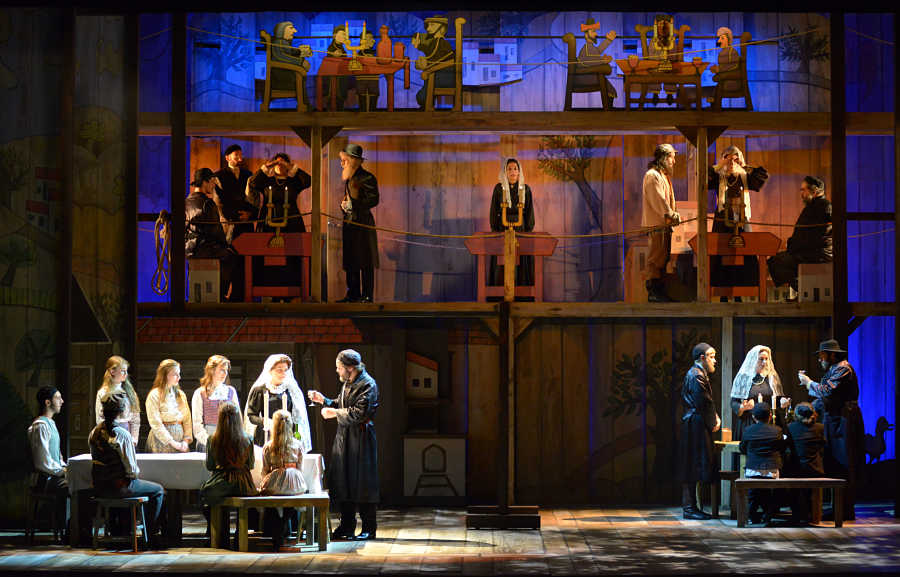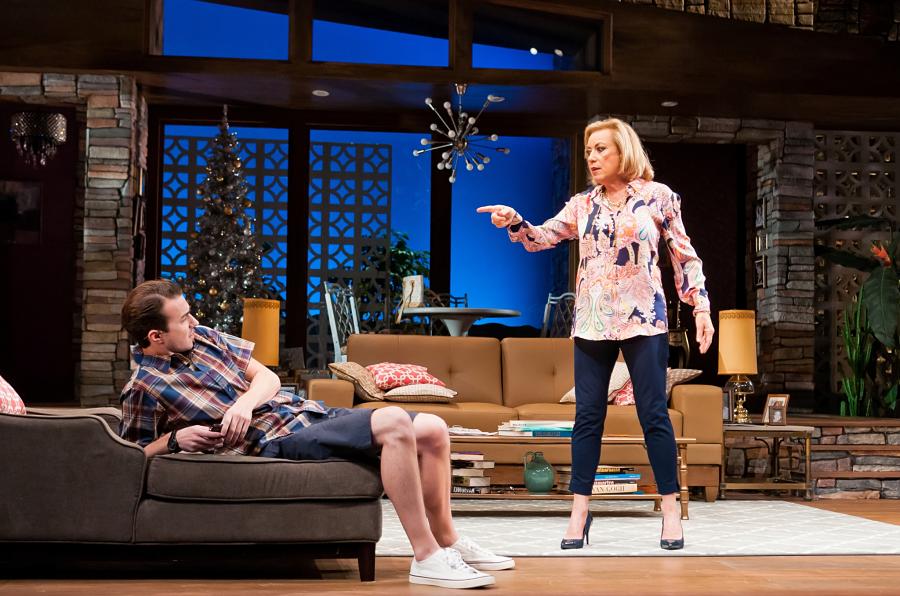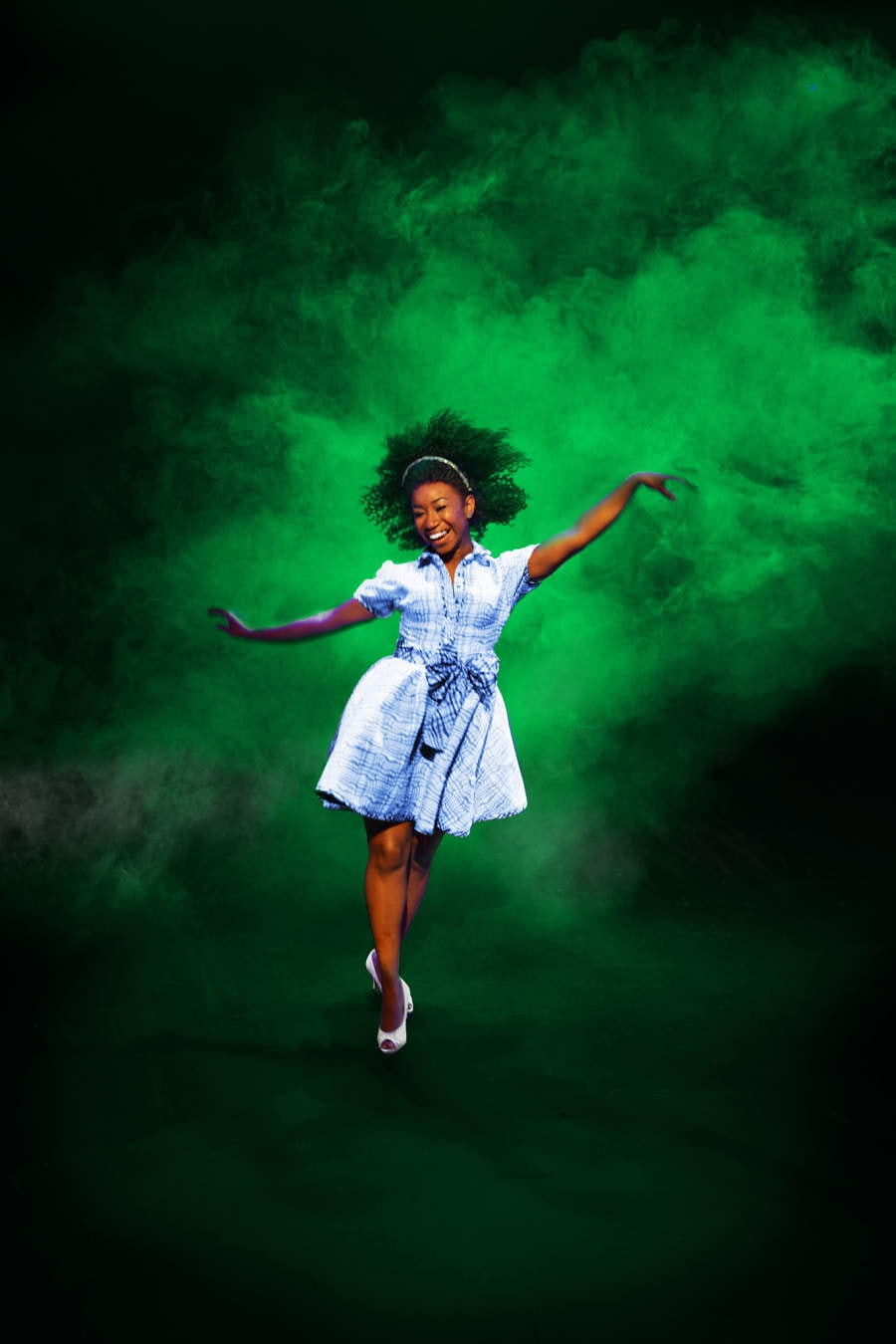JUPITER, FLA.: Originally built by movie star Burt Reynolds as a dinner theatre at the height of his fame (in 1979), and as famous for the stars who often graced its stages (Farrah Fawcett! Jim Nabors! Judd Nelson!) as for going broke in roughly a decade, the Jupiter Theatre has survived several attempts at resuscitation since the mid-1990s. Its most recent revival, facilitated by funding from the Palm Beach County-based Maltz family, seems to have taken hold, and now the Maltz Jupiter Theatre offers a menu of familiar musicals, comedies and the occasional meaty play for an audience of locals and well-traveled winter visitors. We spoke with producing artistic director Andrew Kato about the theatre’s recent history, about its re-envisioned new Fiddler, and about its closest peer.

Who founded Maltz Jupiter Theatre, when, and why?
The Maltz Jupiter Theatre was founded in 2001 by a group of area theatre supporters, following a decade of failed attempts to resurrect the Burt Reynolds Dinner Theatre. The building had fallen into complete disrepair, but a select group of supporters recognized the need for a not-for-profit regional theatre in our area. Milton Maltz, a founding board member and the chairman emeritus of our board of directors, likes to fondly recall that his wife Tamar referred to our area as a “cultural desert” at the time and asked him to “do something.” So he did. Following a renovation, the building opened in February 2004 as the Maltz Jupiter Theatre, named in honor of the Maltzes’ significant contribution toward the project.
Our intimate 617-seat theatre recently completed a $2.5 million expansion (including the Green Room Club Level Lounge and seating area), and we have plans to complete our facilities over the next three years to include increasing the size of our stage, adding a 199-seat second performance space, adding three floors of production facilities and increasing the size of our Conservatory of Performing Arts.
Tell us about yourself and your connection to your theatre.
My connection to the theatre dates back to when I was in high school and college; I worked here as a waiter in the Burt Reynolds Dinner Theatre era. I have a friend and colleague from those days who tells me he remembers me saying that I would one day come back and run this theatre, though I don’t remember that. I moved to New York, where I worked as a producer for 14 years. Two years after the theatre opened, I was asked to return to the theatre and help it find its audience.
What sets your theatre apart from others in your region?
In recent years, the Maltz Jupiter Theatre has been recognized for reinventing American classics as if theatregoers are seeing them for the first time. Currently on our stage, we are extremely excited to have director and choreographer Marcia Milgrom Dodge using her creative brilliance to reimagine Fiddler on the Roof (through Dec. 21), with many exciting new design elements, including entirely new choreography and a fresh new scenic vision.

Although two-thirds of our season focuses on large-scale musicals (many of which are familiar to our audience members), our goal is always to reinvent each production and treat each one as if it’s a brand-new script. So every show is approached with the mission of making that play or musical into a new experience for our audience.
Who is your audience?
We’re very proud to have a sizable, loyal subscription base of more than 7,600—a major accomplishment despite our location in a non-urban area. Our audience members have said they will support us as long as we have consistent, quality work, and I feel like through the years we’ve achieved that.
Our audience is made up of both year-round and seasonal residents. Many of our audience members are from larger cities, such as Cleveland and New York, and they’re used to going to Broadway and other cultural events regularly. This gives them their “theatre fix” for the season.
Young theatregoers come to us through the Maltz Jupiter Theatre Paul and Sandra Goldner Conservatory of Performing Arts, where we offer after-school, weekend and summer programs to more than 600 students. We believe that our investment in these students is important, because they are the next generation of audience members and performers.

Tell us about your favorite theatre institution other than your own, and why you admire it.
We have a strong relationship with another theatre in our area, Palm Beach Dramaworks, and one of the reasons we work well together is because our programming is very different. They produce beautiful work by important playwrights such as Edward Albee, among others, and their slogan is “Theatre to think about.” We focus on an eclectic season that includes large-scale musicals (Fiddler on the Roof, The Wiz, Les Miserables), comedies (The Foreigner) and dramas (Glengarry Glen Ross). I think the two theatres complement each other very well. And I think that both of our theatres create wonderful, high-quality productions.
How do you choose the plays you put on your stage?
The No. 1 rule of producing is “know your audience,” and although many of our audience members appreciate musical theatre, there are others that want challenging drama. I try to choose a season that will offer something for everyone. Seasonality plays a huge part in it, too; our season runs from October to April.
What’s your annual budget, and how many artists do you employ each season?
Our annual budget is $6.2 million, of which $2.3 is donated. Approximately 65 percent of our budget comes from earned revenue. We employ 80 to 100 visiting artists, and we hire another 30 to 40 local artists and local actors each season. Our subscribers have continued to grow each year; we have grown from 2,300 in 2005 to more than 7,600 today. I believe we’re the youngest LORT B theatre in the country.
What show are you working on now? Anything else in your season that you’re especially looking forward to?
I’m very excited about our next production, The Wiz (Jan. 13 – Feb. 1), which I’m directing. In addition to completely re-envisioned scenic design, lights and costumes, we’re adding the elements of puppetry (through a collaboration with Puppet Kitchen), projections (projection designer Brad Peterson) and aerial flying (through ZFX, Inc., a world-renowned flying effects company).

Our audience has been traditionally white, and our production of The Wiz will feature a mostly African-American cast. We hope to inspire and attract new audiences with this production.
Strangest or funniest thing you’ve ever seen (or put) on your stage?
During one of our productions, our lead actor was a Method actor who wanted to have a key so that she could open the door on the onstage set. So in our first preview, the music swelled and the lights came up—and right when she was supposed to enter through the door, the audience instead heard a distinctive rattling sound…because she forgot her key in her dressing room.
What are you doing when you’re not doing theatre?
My partner, Jay L. Johnson, and I like to travel, spend time with our two dogs and host dinner parties at our house.
What does theatre—not just your theatre, but the American or world theatre—look like in, say, 20 years?
I think theatre will become more interactive. It seems that the structure of theatre is loosening up a bit. In order to survive, we’re going to need to understand how younger minds want to be engaged; perhaps less presentational and rigid, with more of an opportunity to respond to the work quickly. So theatre may take different forms. It will be interesting to see how it evolves.


